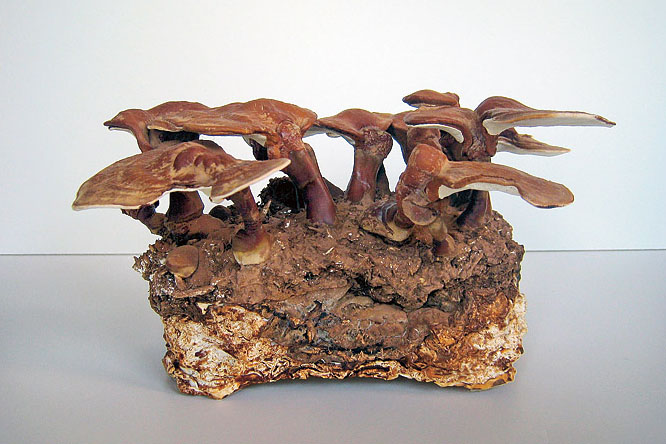Researchers have been vouching for mushroom made bricks that can be used in constructing our future homes. Although the experiments are at initial stage, but there have been several other products like chairs and artefacts that were made using mycelium construction technique.
After a respite from pollution due to lockdowns across the world, the problem of severe pollution still remains quite prevalent. Heavy construction activities are known to be one of the leading factors for this. Taking cognizance of this serious concern and to tackle climate change, research efforts have been strengthened on the whole new concept of manufacturing bricks from mushrooms.
Although the research and experiment levels are at their initial stage, if scientists get the required success, these mushroom blocks can help bring a major breakthrough in the construction industry. In addition to this, they will also assist architects and engineers to help fight global warming. Construction activities across the world account for over 10 percent of global carbon-dioxide emissions.
Currently, the technique entails the making of a brick from mushrooms which are a type of fungi and are easily available almost anywhere in the world. Subsequently, the material used for manufacturing bricks and ultimately buildings is made from mycelium-fungal network from which mushrooms grow and thrive.
In the hindsight, mycelium has proven to be quite biodegradable, less harmful, durable, non-toxic and waterproof in the long run. Along with that, it also leads to less emissions of carbon-dioxide while mitigating the problem of waste management and that of landfills.
What is mycelium and how useful it is?
Mycelium is usually a vegetative tissue of fungus through which it can absorb nutrients. While fungus grows on dead organic matter, it can easily recycle such matter further utilising them in the environment itself. In addition to that, fungal mycelium poses great insulation properties along with being ecologically responsible and cost competitive.
Further, the bricks which are made of such materials are composite in nature. They remain spongy and comparatively softer towards the core while being denser and harder towards the outer skin. Due to this reason, they can easily handle large amounts of compression while being shatter-resistant.
Apart from that, many designers also use mycelium to make cloth hats, canoes and eco-friendly coffins. They can also replace polyurethane in the future. Philip Ross in San Francisco is one such artist who grows mushrooms which are used for making molds, chairs and stools.
Pros and Cons
One of the reasons as to why mycelium technology is being emphasised upon is that it can grow faster and can biome light weight while being low-cost for most of the time. When two live mycelium bricks are placed adjacent to each other, they subsequently form a joining bond among each other while they spread together in the specific area.
Several disadvantages pertaining to mycelium panels and bricks are that their water resistance decreases with increase in humidity. Also, they start decomposing in mere six weeks on coming in contact with the ground. But if maintained properly they can have a lifespan of upto 20 years. Moreover, they start to decay if constantly exposed to fast changing weather conditions.
Production of mycelium material
As far as production of such a material is concerned, the substrate is initially attacked or inoculated by mycelium. The substrate is often composed of cardboard, woodchip waste, rice and wheat husks, sawdust etc. Thereafter, it is left to take a shape in the presence of molds. For that purpose, a smooth and transparent material is preferred for the molds.
The container is often air-tight with a small hole for the exchange of gases. There they are let to incubate for a fixed amount of time. The incubation period depends on the type of mushrooms, humidity and temperature. The optimal temperature for this process remains 25 degrees Celsius. Finally the process is terminated by increasing the temperature to 70-90 degrees Celsius and required mycelium product is produced.

